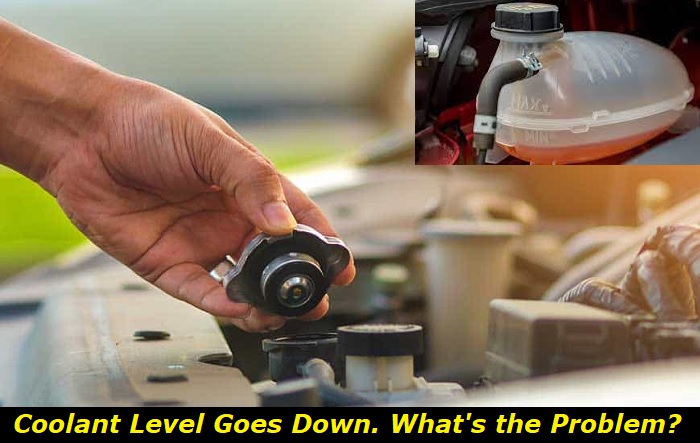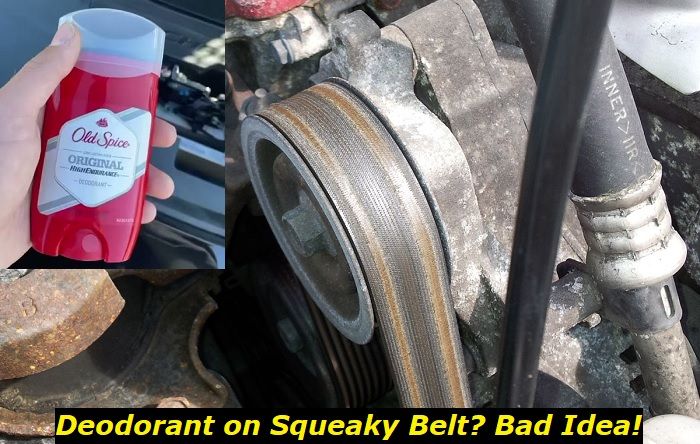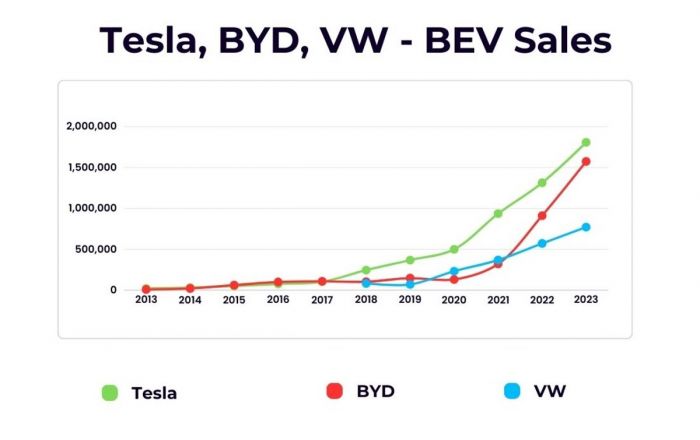Your car's water level in the radiator must be maintained at a certain minimum to allow the engine to operate at the specified temperature. If you discover that the water level in the radiator is going down, you need to find out the cause and rectify it before it is too late. Almost all the time, we tend to assume that the radiator is responsible for the dropping water level. However, several things could be responsible for the drop in the radiator water level in your car.
Coolant level problems highlights
- Level of urgency:high
- Commonreasons:cooling system problems, leaks, coolant expands, circulation issues
- DIY diagnostics:quite complicated
- DIY repair:impossible
- Price of repair:$300 - $850
- Time for repair:3 - 9 hours
- If ignored:engine overheating and failure, cooling equipment problems

How the Cooling System works
The water (coolant) is intended to maintain optimal temperatures inside the engine to allow it to operate properly. The engine cooling systems use antifreeze and air circulation that ensures the engine is not overheated. Water flows from the reservoir to the engine block, which absorbs the heat generated by mechanical and combustion processes. The hot water then passes through the radiator, where with the assistance of air circulation, it dissipates and dispenses the heat before being re-circulated in the system.
The air blows against your radiator as the car moves, and, together with that supplied by the radiator fan, sucks the heat out of the water before the now cool water flows back to the engine via the water pump.
Regular Checks
It is important to check the water level in your car radiator regularly. Most drivers rarely do this and are content with just checking the temperature gauge on the dashboard. Others, especially with modern cars, hope to receive a dashboard warning that their coolant level is low.
As a rule, do not wait for these dashboard lights to appear. Instead, ensure a regular check of your cooling system to maintain optimal performance.
What Causes the water level to drop
Many reasons could cause the water level in your car radiator to go down. Although the outright thought would be that your radiator (or any other cooling system-related component) is leaking, several other areas could be consuming your coolant. It is important to remember that having a low water level does not automatically mean a leak.
A rapid drop in the water level could lead to serious problems and failures in your car engine. Though it may not be easy to diagnose or detect the cause of this water reduction directly, the problem could arise from one or a combination of the following.
1) Leakage
Due to the extreme temperatures and continuous use, the cooling system components will likely suffer from tear and wear. This wear and tear, combined with corrosion within the system where water passes through, could lead to the formation of a hole through which your water leaks. Several places within the cooling system are vulnerable to leakages. They include:
- A hole in the radiator
- Connecting hoses
- Water seals in the pipes/hoses
- The shaft seal in the water pump.
There are several ways you could use to detect leakages. However, some leaks might be extremely difficult to detect and require patience and expertise to diagnose. The leaking water could be seen flowing in or out of the car. It is also possible for water to leak and burn through the exhaust pipe or be combusted inside the engine. The latter could be difficult to detect.
Apart from physically inspecting the visible hoses and seals for a possible leak, you could also check for fluctuations in the temperature gauge on the dashboard. Though such fluctuations are normal when the engine is operational, a significant rise beyond the normal would signify a low water level in your radiator reservoir.
2) Faulty Radiator Cap
The radiator cap is supposed to seal the radiator opening completely to maintain the right pressure that enables water to circulate rapidly through the engine cooling system. The cap also helps to direct some 'excess' water into the overflow tank.
The 'excess' water arises from heat collected from the hot engine. Maintaining pressure and controlling water into and out of the overflow tank keeps the cooling system functional. When the cap becomes a fault, it allows pressure to drop. This may result in the system sucking in more water to compensate for the low pressure, which leads to an overflow and loss of water.
The radiator cap fault may arise from a broken seal, the cap becoming loose due to wear and tear, or corrosion due to its continuous contact with the water in the reservoir.
3) Failed Water Pump
A water pump pushes the coolant through the hoses, cylinder head, engine block, and radiator. Located at the engine's base and driven by a belt from the engine, the gadget uses centrifugal force to push the water through the different passages of the cooling system. If the water pump fails, the water will not have the force required to push it through the cooling system.
External damage to the water pump, loose connections of the hose, corrosion, or broken seals may cause water to leak. Broken water seals in the water pump are especially responsible for water loss. Such a leak would significantly reduce the water level in your radiator and thus compromise the functions of the cooling system.
4) Blown Cylinder Head Gasket
The cylinder head gasket provides a seal between the combustion chambers and the cylinder head. This seal ensures the engine builds up enough compression to release engine power. The gasket also prevents coolants and oil from flowing into the combustion chambers or anywhere else outside of where it should be.
When the gasket gets damaged, the coolant flows into the engine cylinders resulting in various unpleasant conditions that prevent the engine from operating at its optimum. Further, a broken or destroyed gasket allows the coolant to flow out of the engine or mix with the oil. This means that more water will flow from your reservoir, leading to low radiator water levels.
5) Problematic Overflow Tank
The water overflow tank/expansion tank retains the coolant and provides the radiator with water whenever needed. Over time, the tank can become weakened, have loose connections, or even develop cracks that may not be easily noticed. Such incidences may cause it to start losing/leaking water, leading to a drop in the radiator water level.
What to Do
If you discover that your car is losing water quickly in the radiator, you need to diagnose to determine the cause of the water going down so that the problem can be fixed. However, you must top up the water level to ensure the cooling system is working normally before you drive off.
The simplest DIY test is to check whether there is a leak. Look on the ground under your car in the morning after overnight parking to see if there is any evidence of a leak. If you notice any signs of a leak, check thoroughly to confirm whether it is a water/coolant leak or anything else. If you realize the water is leaking, ensure that you pinpoint the exact leakage point to start repairing it.
Other instances of a leak may be difficult to pinpoint, but you could use the telltale signs in your car that may indicate issues with the cooling system. Such includes steam in the hood or a fluctuating temperature gauge. Apart from checking for signs of leaked water on the ground under your car, you could also check on the underside section of the radiator for signs of dampness.
Sometimes, it may be impossible to detect a leak when the engine is cold. Allow the engine to run for a few minutes so that water can begin to circulate in the system, allowing you to spot a leak. However, never open your radiator cap when the engine is hot. It could cause serious burns as the boiling water will gush out under pressure.
Ensure that you carry out regular checks and preventive maintenance to your car's cooling system. It could help detect issues early enough and rectify them before they get out of hand. Check and change your radiator water occasionally to ensure it is clean and free from acidity or becoming dirty.
Every driver needs to remember that a drop in the radiator water level compromises the operations of your car engine and may lead to overheating and destroy your engine.
About the authors
The CarAraC research team is composed of seasoned auto mechanics and automotive industry professionals, including individuals with advanced degrees and certifications in their field. Our team members boast prestigious credentials, reflecting their extensive knowledge and skills. These qualifications include: IMI: Institute of the Motor Industry, ASE-Certified Master Automobile Technicians; Coventry University, Graduate of MA in Automotive Journalism; Politecnico di Torino, Italy, MS Automotive Engineering; Ss. Cyril and Methodius University in Skopje, Mechanical University in Skopje; TOC Automotive College; DHA Suffa University, Department of Mechanical Engineering






Add comment